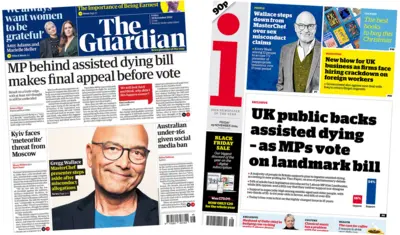We've updated our Privacy and Cookies Policy
We've made some important changes to our Privacy and Cookies Policy and we want you to know what this means for you and your data.
Badgers back in the firing line
Image source, PA
- Author, Tom Feilden
- Role, Science correspondent, Today programme
A new cull of badgers could start in two pilot areas within days.
"As far as badger culling is concerned it has nothing to offer in terms of controlling TB in cattle, and could indeed make the situation worse".
That was the emphatic, and damning, conclusion reached by Professor John Bourne, the man charged with assessing the biggest and most comprehensive scientific experiment ever conducted in the British countryside - the Randomised Badger Culling Trial, or RBCT, in June 2007.
Devised by Sir John, now Lord, Krebs in 1996, the RBCT involved the slaughter of thousands of badgers over a ten year period at a cost of some ВЈ50 million.
The results showed that culling badgers - a natural reservoir for bovine TB - did reduce the incidence of disease in cattle within the trial area, but that infection rates increased in the surrounding countryside as badgers were displaced. The net benefit was marginal, and given the huge costs associated with culling, was not economically viable.
So what's changed? Well, the incidence of disease in cattle has continued its remorseless rise. Last year some 3,741 farms suffered outbreaks, and 34,183 cattle were slaughtered after testing positive for bovine TB.
That's ramped up the pressure on politicians to come up with a solution. "We simply can't go on while TB increases its vice-like grip on family farms" argues the president of the NFU Peter Kendall. "I can't stress strongly enough what a disaster it's been for UK agriculture. The spread of the disease is doubling every nine years and we have to find some way to roll it back, to put a break on this catastrophic disease."
Ongoing research around the RBCT culling sites also shows that while the benefits of culling within the trial zone persist for some time, the spike in infections around the edges - the perturbation effect - tends to dissipate over time.
By tweaking the design of a cull - expanding the central killing zone, and choosing sites carefully to take advantage of hard boundaries like rivers and motorways - Defra's chief veterinary officer Nigel Gibbens argues it should be possible to maximise the positive impact on bovine TB infection rates in cattle.
"The evidence is different now because we have six years more data. We've learnt from the lessons of the Randomised Badger Culling Trial and turned it into a policy that can be delivered and gives us the benefits of culling in the long term."
This new interpretation of the data is about to undergo the ultimate test. Culling in two pilot zones - around Tewkesbury in Gloucestershire, and in west Somerset - could start as soon as this weekend.
Covering some 400 square miles of open countryside, the trial sites are much larger than the ten-by-ten kilometre box squares used in the RBCT, and have been carefully chosen to take advantage of natural barriers to the movement of badgers like the M5 and M50 motorways and the river severn.
But not everyone's convinced by this reworking of the Randomised Badger Culling Trial with the benefit of hindsight.
The scientist who came up with the original idea for the experiment, Lord Krebs, says it smacks of fitting the facts to the answer you want to achieve in the first place.
"I have to say I've not found any scientists who are experts in population biology or the distribution of infectious disease in wildlife who think that culling is a good idea. People seem to have cherry picked certain results to try and get the argument they want."
Top Stories
More to explore
Most read
Content is not available








